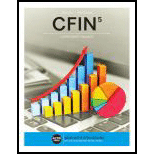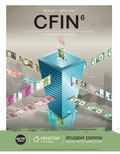
Degree of operating leverage (DOL):
It is the ratio of gross profit to net operating income.
Calculate the degree of operating leverage as follows:
Degree of financial leverage (DFL):
It is the ratio of net operating income to earnings before tax.
Calculate the degree of financial leverage as follows:
Degree of total leverage (DTL):
It is the ratio of gross profit to earnings before tax.
Calculate the degree of total leverage as follows:
By using the income statement calculate the degree of operating leverage, degree of financial leverage and degree of total leverage.
Want to see the full answer?
Check out a sample textbook solution
Chapter 12 Solutions
CFIN (with Online, 1 term (6 months) Printed Access Card) (New, Engaging Titles from 4LTR Press)
- What do you know about corporate finance? tell me about thisarrow_forwardWhich of the following is the primary function of insurance? Making risk disappear. Pooling and sharing risk among the insured. Making someone else pay for an accident or loss. Don’t know.arrow_forwardwhat is the corporate finance? explain allarrow_forward
